All around the world, the triathlon has been recognized as one of the most demanding sports events. This type of race requires participants to undergo three high-intensity sports, swimming, cycling and running in the same race.
Compared to marathons, triathlons are much harder due to the transition of energy and pace from one discipline to another that demands a rapid change in metabolism and calorie supply. Most beginner triathletes know that they have to invest some money to buy a good triathlon bike.
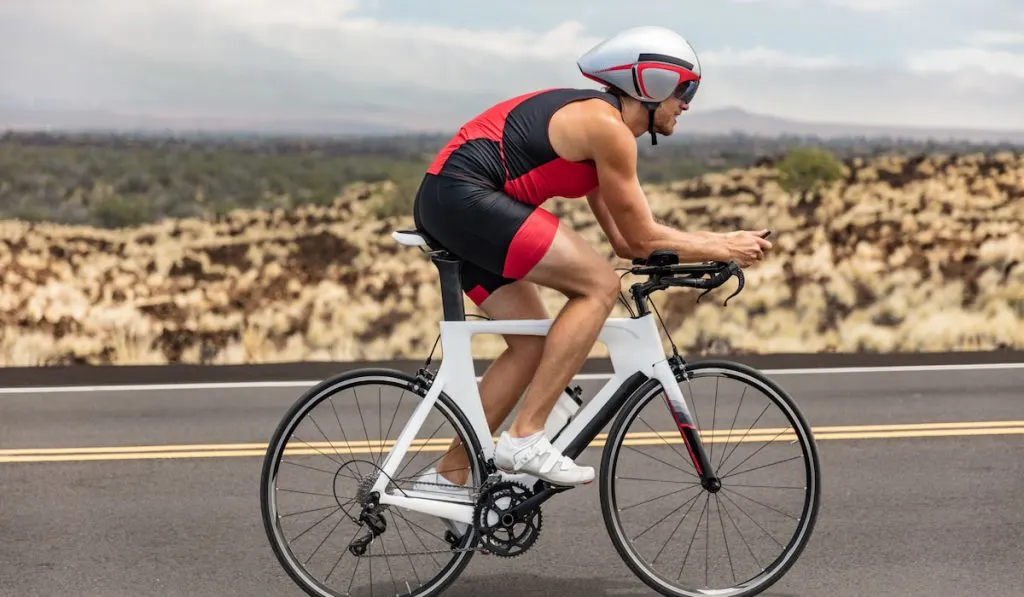
Some of the common questions that they would ask would be:
Are triathlon bikes comfortable? Or they are built just for performance?
Here’s the answer:
Triathlon bikes are made for their performance and geometry.
They are designed for aerodynamics and speed but not for comfort.
These bikes also allow bikers to use their maximum force when peddling and get the most speed out of the ride. Riding on triathlon bikes will give bikers an edge by sitting in an aero-tuck position that lowers their upper body.
How Triathlon Bikes Are Designed
Modern triathlon bikes take their geometrical design from the Quintana Roo Kilo, one of the earliest triathlon bikes designed by Ironman racer Dan Empfield. He implemented two basic geometry changes to triathlon bikes that allow bikers to ride powerfully in a lower position.
Simply put, to increase the aerodynamics and performance of the bike, the design has to sacrifice comfort.

For instance, the aero bars are designed to lower users’ bodies due to the short head tube of the bike. Then, the seat tube angle is also steeper and closer to the ground.
In turn, this will move the saddle forward relative to the center of the pedaling axis.
Additionally, the seats of triathlon bikes will force bikers to sit on the area between the anus and genitals called the perineum. Sitting on this area for too long can induce uneasiness and pain.
However, as more modern triathlon bikes are being produced in different styles and sizes, bikers now have the options to choose which one will reduce the discomfort without sacrificing the bike’s performance.
If you’re a beginner triathlete, you should be able to find the right bike with a saddle that fits your body and sitting posture.
At first, you might feel slightly uncomfortable due to your overall body weight that centers around the saddle. But after a few weeks or sessions of training, you will become stronger, pushing more force away from the saddle.
As a result, less weight will be put on the saddle, and you will get used to sitting on your bike.
The Difference Between Triathlon Bikes and Road Bikes
In the community of avid cyclists and triathletes, there is a heated debate to prove or dispute the claim that triathlon bikes are better than road bikes or vice versa. From a glance, we can only see these two bikes look slightly different.
But what about their mechanics and performance?
Simply put, there are some differences that separate triathlon bikes from road bikes. These include:
Seat position
Triathlon Bikes
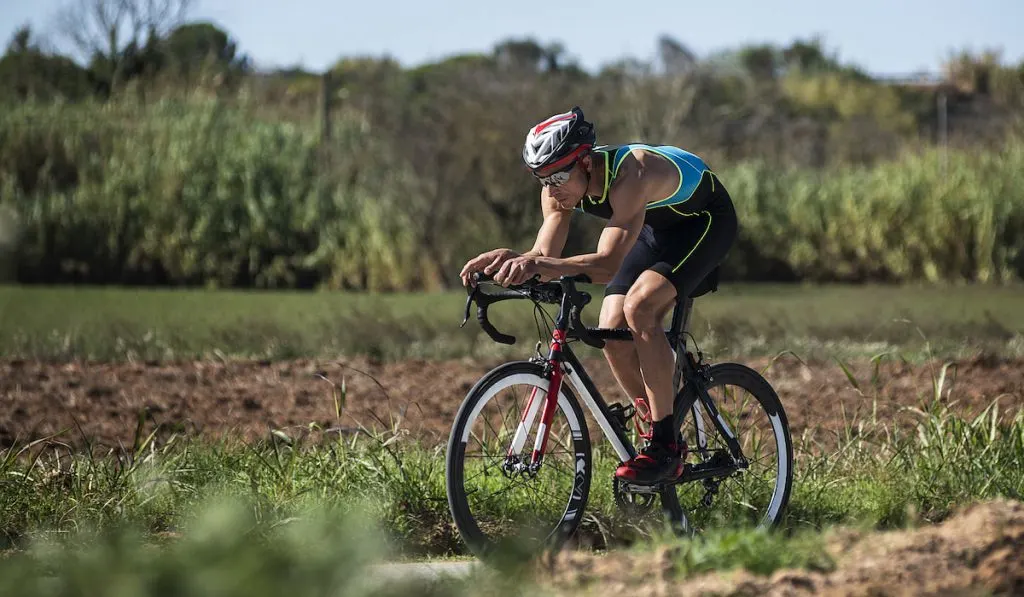
The steeper seat tube is between 76 degrees and 78 degrees.
You can sit closer to the front to achieve aerodynamics and speed. Sitting in this position will also push your hips forward, reducing pressure and tension on your quadriceps and hamstrings.
Road Bikes
The seat tube is less steep than triathlon bikes, sitting at angles between 72 degrees and 75 degrees.
Handling
Triathlon Bikes
Triathlon bikes come with aero handlebars (elbow rests). Although they offer a more aerodynamic shifting, these bikes are for experienced cyclists and seasoned triathletes.
Beginners might have a hard time controlling and balancing triathlon bikes. But with enough training, anyone can get used to them.
Road Bikes

The drop handlebars on road bikes will allow riders to place their hands within a comfortable reach of the brakes. This will increase their handling, steering, and braking power.
However, due to the less aerodynamic design, these bikes aren’t as fast as triathlon bikes.
Frame Angle
Triathlon Bikes
Triathlon bikes possess a streamlined body frame that allows riders to sit in an aerodynamic position. The steeper angle of the body frame can also reduce the pressure being put on your quadriceps.
Road Bikes
Sitting on the shallower frame angle of road bikes will allow you to sit in a more upright position.
Although you will sit comfortably on these bikes, your performance won’t be as good as when you use triathlon bikes.
Frame Tube
Triathlon Bikes
Triathlon bikes possess large, oval tubes with a more streamlined frame that allow riders to cut the air and reduce resistance on the frontal area. They are built for performance, not comfort.
Road Bikes
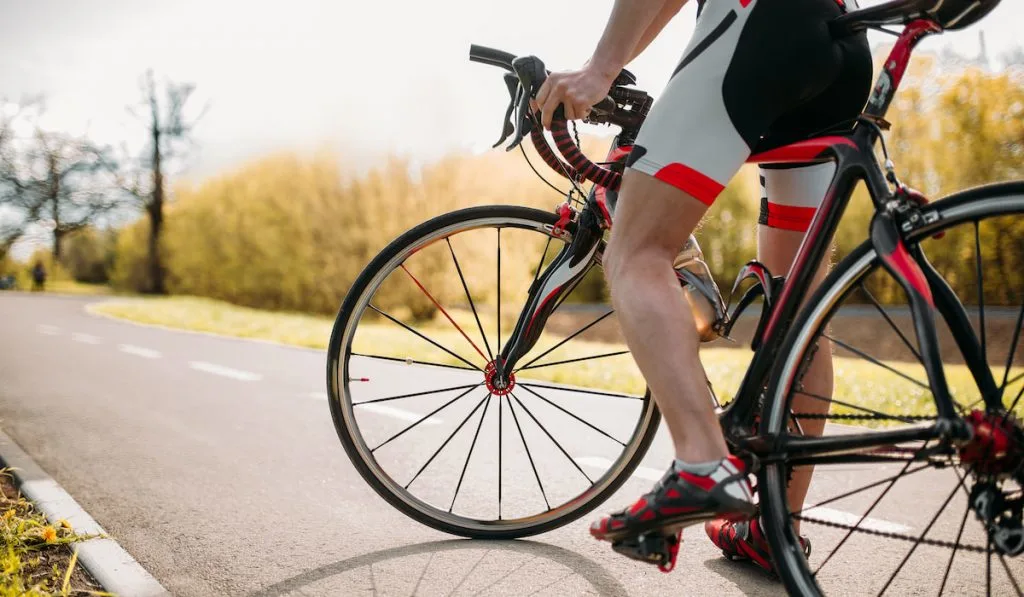
The top tubes of road bikes are designed to reduce vibrations while maintaining stiffness for efficient energy transfer. Their body frames are also built for comfort. You can ride these bikes over long distances.
Aerodynamics
Triathlon Bikes
There is no doubt that triathlon bikes are much faster than road bikes. This is because the geometry and design of these bikes reduce resistance and drag, allowing for better speed when peddling against the wind.
Road Bikes
Road bikes are slightly slower than triathlon bikes. However, this doesn’t mean they have no use. If you give these bikes to any seasoned cyclists, they can ride them faster and better than any other bike.
Body Posture
Triathlon Bikes
Sitting in an aerodynamic position on a triathlon bike will allow you to exert less energy using your quadriceps. In turn, this can save your energy when you transition from cycling to running during the race.
Road Bikes
Sitting on road bikes with a slightly inclined position can strain your quadriceps and hamstrings. Generally, they are not optimal in a race that requires a quick transition of activities.
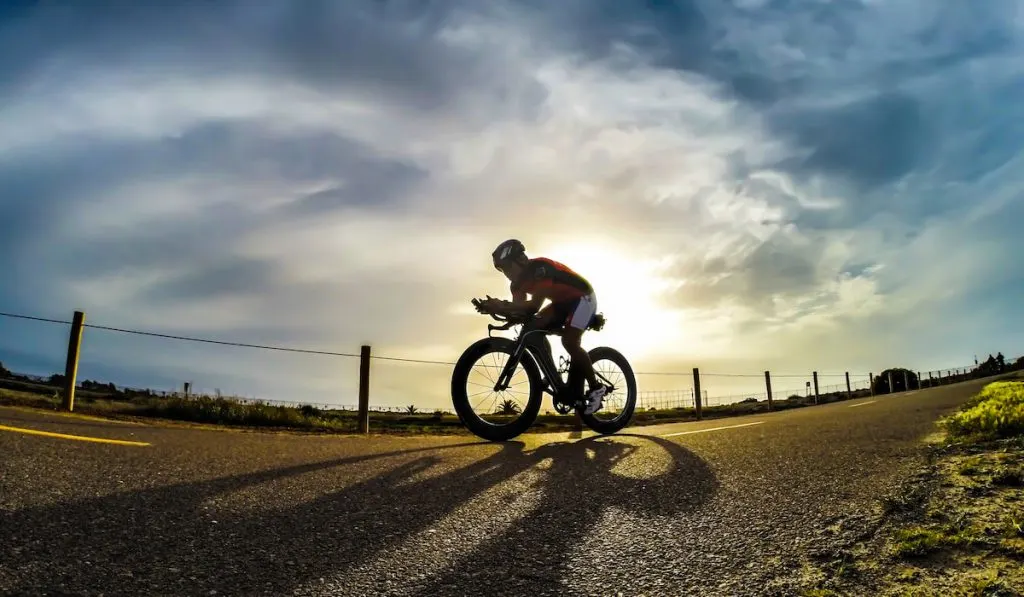
How Much Does a Triathlon Bikes Cost?
When purchasing triathlon bikes, the first thing that we would look at is the price tag. Depending on the brands, designs, materials, and performance, each bike is priced at a different value.
Generally, the price of triathlon bikes starts as low as $1,700 and goes up to $4,900. Some brands can even go up as high as $12,000 per bike.
What Makes Triathlon Bikes Expensive?
Triathlon bikes are valued at different prices due to several reasons. These include:
What the Bike Is Made From
To ensure that these bikes are durable enough to perform at their highest limit, manufacturers will use high-quality materials. The higher the quality of materials, the higher the price of the bike.
How It Was Made
Apart from materials used in manufacturing, the manufacturing process itself can become quite costly due to several factors.
For instance, the quality control during the manufacturing process of the bikes takes a lot of time. The aerodynamic frame of these bikes requires impeccable attention to detail that demands more energy and time in the assembly line. Every part of the bike is inspected thoroughly to avoid botched designs or counterfeit materials.
Also, selecting the best materials for the overall structure of the bikes and getting rid of the low-quality ones requires more time and precision.
Research and Design
Every brand designs its bikes to cater to a different pool of customers, serving different needs that yield different performance levels and market prices.
Market Supply and Demand
Consumer demands tend to drive the price of every product in the market. Hence, manufacturers will conduct research on consumers’ habits, demands, and market size before pricing their bikes.
Due to the small market for triathlon bikes, the price of these bikes is much higher than other types of bikes on the market. Each year, the rise of inflation will also contribute to the increase in their price.
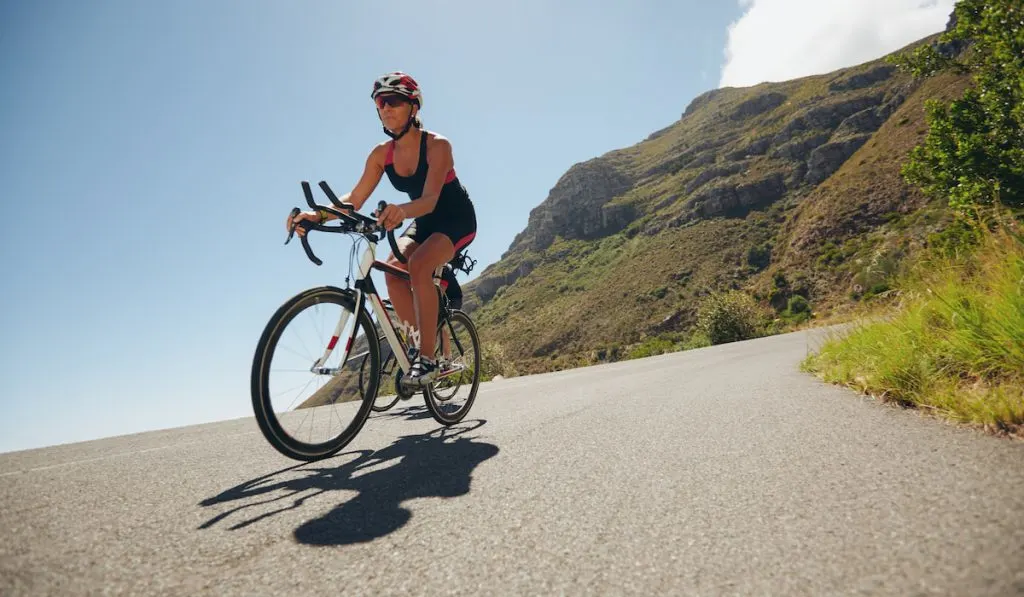
The Advantages of Using Triathlon Bikes
Different types of bikes are designed to be used in different courses or tracks. Bikers can get used to just one type of bike or several.
But as with any other bike, a triathlon bike needs to be properly fitted, and the owners must get used to riding them before they can see any advantages.
However, there are some advantages to using triathlon bikes over any other bike:
- Triathlon bikes allow you the freedom to change gears while staying in an aerodynamic position. This feature isn’t available on most road bikes with clip-on bars that require you to change position when shifting gears.
- Triathlon bikes are best suited for a race with super-straight courses that require faster bikes.
- Triathlon bikes have more storage areas.
- The geometry of triathlon bikes contributes to their lighter weight and faster performance. First, the position of their seat posts and the bottom brackets are much steeper, around 78 degrees, compared to other bikes that sit around 72 degrees. Then, the aero-bars, frame tubes, and wheel design add to the increased performance.
Final Thoughts
Triathlon bikes are specially designed for triathletes to compete in a triathlon. If you are a beginner or hobbyist, then it is best for you to get used to a typical road bike and slowly transition to a triathlon bike whenever you are ready.
Unless you are competing and looking to go professional, then you should always choose comfort for long-term use.
Resources
- https://triathlonbudgeting.com/are-triathlon-bikes-comfortable-when-should-you-get-one/
- https://www.active.com/triathlon/articles/6-things-to-consider-before-buying-a-beginner-triathlon-bike
- https://www.all3sports.com/blogs/news/triathlon-bike-position-and-the-myth-of-comfort
- https://mymottiv.com/triathlon-bike-vs-road-bike-two-situations-where-a-road-bike-becomes-faster-than-a-triathlon-bike/
- https://mytriworld.com/triathlon-bikes-vs-road-bikes/
- https://bikeshaven.com/tri-bike-vs-road-bike/
- https://triathlonbudgeting.com/why-are-triathlon-bikes-so-expensivewhat-to-look-for-is-used-a-good-option/
